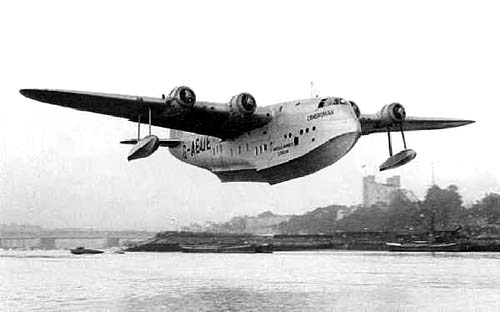Africa news. The headline is bound to raise questions galore no doubt, exactly what is intended to have readers sit up and take some notice. Notice of Kenya’s colonial past but also notice of Kenya’s present day.
The location of Kenya’s first international airport, an airport of sorts anyway, was, and many have in the past failed to answer that question correctly, the surface of Lake Naivasha. The route then took the aircraft on to Mombasa, before proceeding on to Dar es Salaam and further down south to the endpoint of the route being in Durban. Later on in the days of Imperial Airways’ flying boat route was Kisumu added which also served as an alternate for Naivasha, should weather conditions prevent a landing there, even though it meant that passengers destined for Nairobi would have to embark on a longer train journey compared to the relatively shorter trip from Naivasha.
The erstwhile Sparks’ Hotel, named after the first owners, was built some 81 years ago.
The first five rooms, still standing today at the same spot though repeatedly modified, enlarged and modernized were completed by 1933, allowing Ann and Herbert Sparks to take in paying guests but the ‘official’ opening, cutting tape, cake and all, still had to wait until Christmas Day in 1935 when according to records obtained the ‘Sparks’ was fully booked.
The hotel soon gained a reputation as a comfortable and conveniently located rest stop for those taking the hard road from Nairobi into the Great African Rift Valley or vice versa, but only when Imperial Airways commenced their long distance flights between London and Durban with the legendary ‘flying boats’ – huge ‘beasts’ in those days – was it that the hotel began its rise to fame and glory which lasted to the present day.
These flying contraptions landing on water came from the River Thames via the Mediterranean Sea to the Nile delta near Alexandria and then flew along the river with further landings in Khartoum before breaking the journey in Naivasha, the lake being Kenya’s first international airport in a manner of speaking.
Crews and passengers initially stayed on land for night stops along the route and the trip taking several days allowed in particular the passengers to take in some real life experiences en route. Lions back then were reportedly still roaming the floor of the Rift Valley and their roars could be heard at night, causing probably fear and hopes amongst the airline guests for the swift onset of daylight, considering the stories passengers had heard about the man eating lions of Tsavo which had taken quite a few fellow Englishmen in their days and more locals in addition to the ‘imported food’ when the railway was constructed some 30 odd years earlier.
Transport from Naivasha to and from Nairobi was mainly by the railway but also, when available, by cars or trucks or in the worst case by ox drawn wagons, having to make the way up the escarpment and across the Limuru hills before reaching the then capital of the colony. Ancient pictures still remind the guests of what is today called the Lake Naivasha Country Club, giving a glimpse back into times long passed but still remembered by a few as this correspondent can vouch for.
The Lake Naivasha Country Club today is one of the last remaining classic resort hotels at the lake side, of course modernized and repeatedly refurbished over the years but as popular today as it was in the olden days. While more competition has emerged along the lake shores, the style of the club and the architecture of the main building and of the early rooms and cottages is clearly invoking flashbacks into the colonial days of the country, carefully preserved as a piece of Kenya’s history and as the very site where the first flights from the UK landed, way before Embakasi airport in Nairobi was established as East Africa’s main aviation hub.



